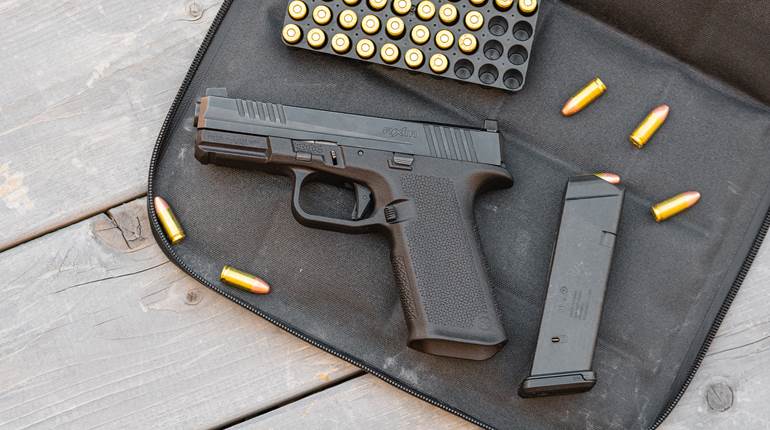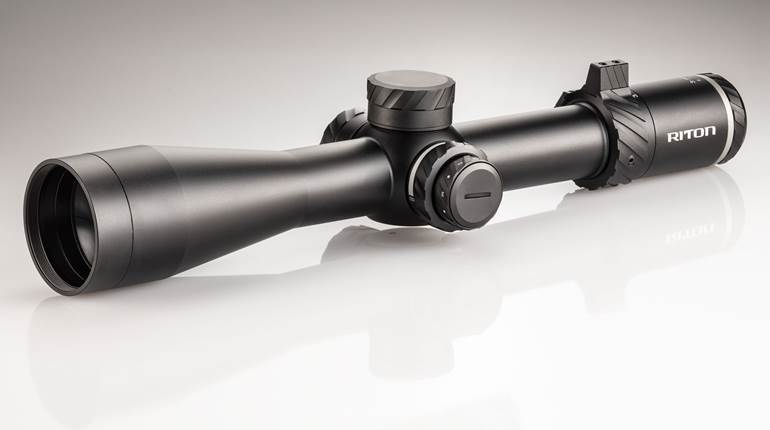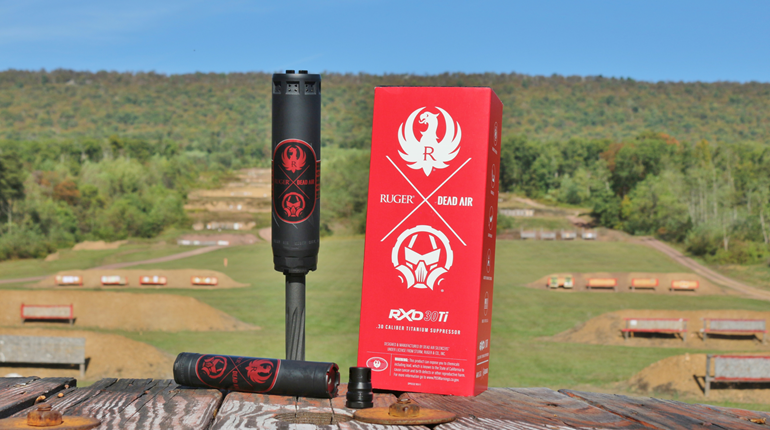
While I pride myself on my rifle-shooting skills, I believe I am a far better pistol coach. The reason behind this paradox is that I’ve made every imaginable error possible regarding stance and grip when learning to shoot a handgun. Therefore, I can quickly identify the same quirks when I’m working with a new shooter and explain to them why what they’re doing doesn’t work before explaining what works better. With more than a decade of experience under my belt and more than 10,000 new pistol shooters trained, I have seen a lot of improper technique and have helped these newcomers work through it. There are, however, a few reoccurring errors that I encounter, and I thought it might be beneficial to put them into print. So, without further ado, here are five of the most common mistakes that new shooters make in their grip and stance.
Cup And Saucer
Decades ago, it seemed best to hold your handgun (typically a revolver) in your strong hand and then cup your support hand around the heel. While it was thought to be the best way to do things at that time, we have found far better uses for the “other” hand. The problem with the old technique is that it didn’t support the weak side of the gun. As such, an aggressive trigger press would push the gun where there wasn’t any skin. Additionally, supporting the handgun from the bottom also creates a tendency to push up as the trigger is pressed. Today, we know that a balanced grip that moves both hands up as high as possible is the best way to get the job done. To this day, I have yet to correct a shooter that has reverted back to the "cup and saucer" technique.

Stiffening of The Lower Body
Before teaching a group of students the basis for a pistol stance, I have them all stand up and gather around me. Once everybody has their feet planted, I tell them to freeze and look down; they are already in a near-perfect position from the waist down. The biggest problem new shooters face when they assume a pistol-shooting position is that they are trying too hard to assume what they think is a pistol-shooting position. Stiffening or “locking” your legs is never a good idea, and it's as painful to watch as it is to employ. A good, relaxed stance with your feet placed shoulder-width apart is all it takes to manage recoil and get your next shots on target in short order.

The "Squatty Red Dotty"
Several schools of thought teach an exaggerated foot placement, and there is nothing wrong with that. However, far too often, shooters turn their position into a balancing act, and recoil moves them a bit more than is comfortable. I’ve seen this with plenty of iron-sight shooters, but curiously, it is most apparent with red-dot pistol shooters. Many of them are under the impression that because they brought their gun down one inch, they must bring their upper body down two feet. They nearly do a split to get there and can be pushed over with a feather. The best way to accommodate that dot is to learn to present a little lower and put the lens directly in between your eye and the target.

Hyper-Extending
No two healthy bones in the human skeleton lock together in the manner that we associate with hardware. The only way to achieve complete rigidity between two bones is to exert the muscles around them. Exerting muscle is never a good thing in life, and that trend follows right into shooting a pistol. The hair on the back of my neck stands up whenever I hear phrases like “Lock your elbows,” or “lock out into target.” The moment you hyper-extend your arms, the muscles fatigue and force you to rush whatever you are doing. The back half of this is that you’ll also relax at your first opportunity. Unfortunately, that moment is typically while the gun is firing, and you'll take your sights off-target before the bullet leaves the barrel. Instead, one should press one's arms out until one hits a natural stopping point. If you find your elbows rolling toward each other, you’ve gone too far. Conversely, you shouldn’t see much (if any) bend in your arms when you are fully presented.

Leaning Forward
The last one is an issue that I, too, suffer with, and that’s aggressively leaning into a pistol stance. If you are bent forward (like you are taking a bow), then everything above the waist will ride the recoil of every trigger press. We get that way from presenting from the hips instead of from the chest, so it can be fixed with enough repetition. To get yourself into a better position, just roll your shoulders toward the target to provide that forward orientation needed for recoil control. To help students better visualize this, I describe it as a shrug that moves your shoulders forward instead of straight up.

The skills required to shoot a handgun are often discounted, particularly if you already have a background in rifle shooting. However, it’s important to remember that although the target is closer, the firearm is inherently less accurate. Furthermore, it only makes contact with your body in half of the places as a long gun. Understanding what works and what doesn’t right off the bat will help you to avoid building improper technique into muscle memory and save you frustration later down the road. If you have questions about what you should be doing when you grip a pistol and assume a stance, it's best to consult a qualified instructor immediately. After all, the price of their time is far less than the cost of the ammunition needed to practice away a bad habit.





































